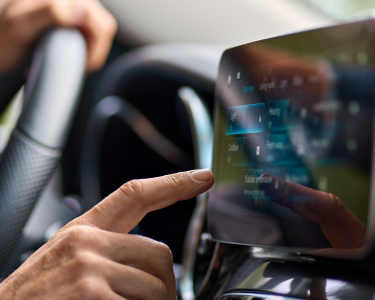Beyond the Screen: The Transformative Power of Spatial Computing

Spatial computing is changing how we interact with technology as it digitizes people, objects, and machines. This shift is reinventing human-computer interaction (HCI) in ways we are only beginning to explore. The technology is gaining popularity across various industries, signaling the merging of physical and virtual worlds. As per a recent report, the global spatial computing market will reach USD 469.8 billion by 2030 while growing at a compound annual growth rate (CAGR) of 20.4% from 2023 to 2030. The market has been on an upward trend due to the growing interest in immersive experiences, technology progress, increased adaptation in various industries, software and hardware infrastructure improvement, and investment and funding of technology startups. This growth reflects the expanding role of spatial computing in the retail, healthcare, and education sectors. Integrating physical with virtual has become a norm, but why is spatial computing cementing itself as the quickest way to outpace HCI?
Core Technologies Powering Spatial Experiences
Spatial computing allows users to interact naturally with digital and physical environments through AI (artificial intelligence), ML (machine learning), and quantum computing. AI and ML enhance natural language understanding and computer vision, while quantum computing enables real-time simulations.
This technology relies on AR (Augmented Reality) headsets, VR (Virtual Reality) devices, MR systems, LiDAR mapping, haptic feedback units, and edge computing processors. Spatial computing modernizes the medicine, retail, and education industries by integrating IoT (Internet of Things) sensors and blockchain for secure data exchange. Enterprises use this technology to superimpose digital information onto the physical world, transforming interactions, facilitating intuitive navigation with AR glasses, and establishing a seamless link between digital and physical environments.
Unlocking Potential: Creating New Digital Realities
From fully operational smart cities to hyper-realistic collaboration spaces, the future of spatial computing promises a reality where today’s physical spaces are seamlessly turned into digital realities, redefining human engagement with technology. The impact of spatial computing extends beyond gaming and entertainment; it has now integrated into healthcare, education, retail, and manufacturing.
- Manufacturing: Spatial computing develops intelligent machines with the help of AR, VR, and digital twins. Their collective capabilities enable workflow optimization, defect detection at each stage, and real-time cooperation. Digital twins provide operational visibility and on-demand maintenance, reducing downtimes and enhancing productivity. Likewise, training solutions that focus on immersion help narrow the existing skills gaps and improve workplace safety. These improvements enable manufacturers to make sound decisions for a sustainable and resilient digital transformation.
- Healthcare: Surgeons can use AR to visualize internal organs and their structures, which can assist them in refining their surgical techniques. At the same time, therapists can use VR environments to help their patients suffering from phobias or post-traumatic stress disorder (PTSD).
- Education: Spatial technology can transform teacher-student relationships by changing the traditional concept of the classroom. With advancements like 3D imaging and mechatronics, educators can take students on virtual journeys through history or allow them to explore and disassemble biological organisms in a virtual environment.
- Retail: Spatial technology can allow customers to visualize how clothes will fit without trying them on and how a piece of furniture will look in their living room before making a purchase.
Unlocking the Future: How Hardware and Software Shape Spatial Computing?
Rapid advancements in hardware and software are accelerating the adoption of spatial computing. The range of devices, from AR/VR headsets to advanced mixed reality systems, is growing unprecedentedly. Additionally, cutting-edge technologies provide developers with the tools to create highly detailed spatial environments.
5G networks and edge computing are solving the latency issues and limited bandwidth arising from heavy spatial data usage. These technologies enable seamless information transfer, essential for real-time remote surgeries and collaborative design sessions.
A Vision Beyond Challenges
Despite its transformative potential, spatial computing faces several challenges that hinder widespread adoption. Cost remains a significant barrier, as most organizations still find high-end AR/VR devices and the required infrastructure prohibitively expensive. Design and integration also involve high technical complexity, requiring professionals with expertise in computer vision, AI, and 3D modeling to create well-integrated spatial experiences. Furthermore, the volume and nature of data collected by spatial computing applications raise privacy concerns. Collecting environmental and user context tags means there would be sensitive data security and usage issues. Moreover, AR/VR immersion fatigue restrains adoption and sustained use.
Enterprises can tackle these issues by promoting deeper interdisciplinary collaboration and specialized design approaches that render them cost-effective. Addressing privacy issues will also require more robust data security measures. As spatial computing evolves, firms will need skilled professionals in AI, machine learning, data security, and UX design. Addressing these challenges can drive mainstream adoption and unlock sustainable value creation.
Charting the Way Forward: Cementing the Business Value of Spatial Computing
Integrating AI and IoT will make spatial computing more cost-effective, prominent, and usable. This unified vision will enable devices to work together for a seamless, cutting-edge experience. Imagine a futuristic smart home using spatial computing—visualizing energy consumption in 3D and controlling appliances with a glance or a hand gesture. Virtual collaborative offices could replace physical spaces in business, allowing global teams to work together effortlessly.
Spatial computing is set to redefine how we interact with technology. But the real question is... will it truly change our lives? And if so, to what extent? Now is the time to explore its full potential.

With over 28 years of experience in IT and Technology Industry, including leadership roles in various organizations like Infosys, Wipro, Aricent, and GlobalLogic Rohit Madhok is a distinguished, high-impact business and technology leader at Tech Mahindra with a diverse skill set that encompasses managing and executing large & complex digital transformation projects.More
With over 28 years of experience in IT and Technology Industry, including leadership roles in various organizations like Infosys, Wipro, Aricent, and GlobalLogic Rohit Madhok is a distinguished, high-impact business and technology leader at Tech Mahindra with a diverse skill set that encompasses managing and executing large & complex digital transformation projects. Rohit is a well-respected media spokesperson with active engagements in key industry forums such as the Mobile World Congress, TM Forum, Qualcomm DX Summit, NASSCOM Events, ARM Summit, and others. He has been widely and exclusively featured as an established thought leader in Times Job, The Industry Outlook, Dataquest, TechGig, Mobile Magazine UK, TechCircle, NCN Magazine, EFY Magazine, LinkedIn Live, and many more.
Less







